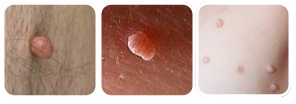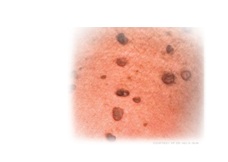Facts about Skin tags
An acrochordon, also known as a skin tag, also known as or fibrous polyp, is a small flesh colored pouche that can either be raised on the skin or protrude from the skin on a stalk called a "peduncle."
It forms primarily in areas where the skin forms creases, such as the neck, armpit, and groin. They may also occur on the face, usually on the eyelids. They are made up of loosely arranged collagen fibres and blood vessels surrounded by the epidermis.
Skin tags may be either smooth or irregular. Although the colors usually match your skin tone, they can sometimes have a deeper pigmentation like that of a mole. They can be found singly or in multiples. Skin tags are small and grow slowly, and they should never get to be more than about 1.30 cm in size.
They can be a small flap of skin or a round bump that is attached to your body by a stalk.

They should be the same color as your skin or a bit darker and should be soft to the touch.
If you have something that doesn’t match this description, you may want to visit your doctor.
What the cause of skin tags
Skin tags are more common in middle aged women then men or children, but anybody can get them. Both men and women are susceptible to them as they age and they are quite common in those over 60 years of age. They can occur after pregnancy or weight gain. They are also more likely seen in obese people as well as people with Type 2 diabetes. A tendency to develop skin tags may run in families. In some cases babies are born with skin tags.
Skin tags are most likely found where the skin may crease, such as around the neck, underarms, groin, under the breasts, inside of the upper thigh area, or on the eyelids or cheeks. They can occur just about anywhere!
Why get them removed?
Although they are generally skin coloured, they sometimes can have a deeper pigmentation like that of a fibroma. It is always best to get your skin tag checked by a specialist to ensure it is benign.
With skin tags, the biggest problem could be that you just don’t like the way they look! They may also be rubbing against jewellery, or irritated by clothing, which in some cases may cause pain and an inflammation of the area. And of course cosmetic reasons.
Read how Melbourne MOLE clinic can help you to
get rid of skin tags.




